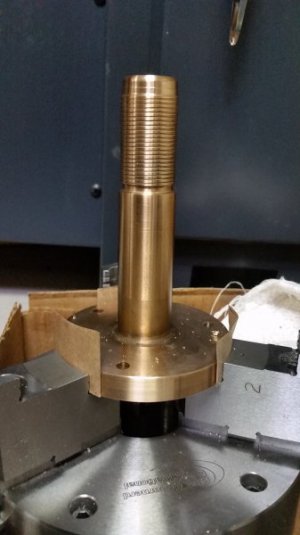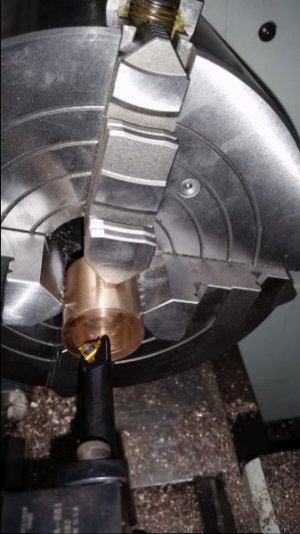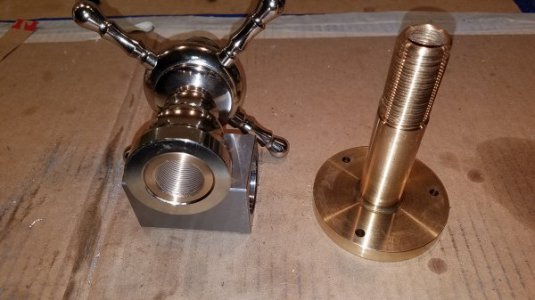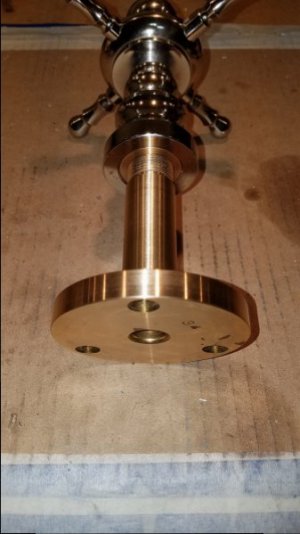- Joined
- May 16, 2016
- Messages
- 1,702
I knew it was a mistake...but I did it anyhow!
Was working on the continuing saga of the "Maybe It'll Turn Into A Dividing Head If I Keep Going!" Started working on the dial this morning and got to figuring how many degrees it would be for a complete turn on the worm screw shaft. Woulda thought I'd do that before hand wouldn't ya. Hmmmm? Uh-Oh! I had used a 5/8" - 11 thread because it was handy and feasible to do at the time. I didn't think ahead and ended with 32.727 degrees per revolution. Hmmm? I used 33 degrees but know it won't work in the long run. I'll lose .28 degrees per revolution and that will make me 3 degrees under in 360 deg.
Carp! I figure I'll finish it with the idea to work out any 'Other' bugs before I redo it.
WHAT A MAROON!
WHYEMIER the 'I don't think it through before I start.' guy.
Interesting looking dividing head, do you have any earlier pictures of the construction process.





